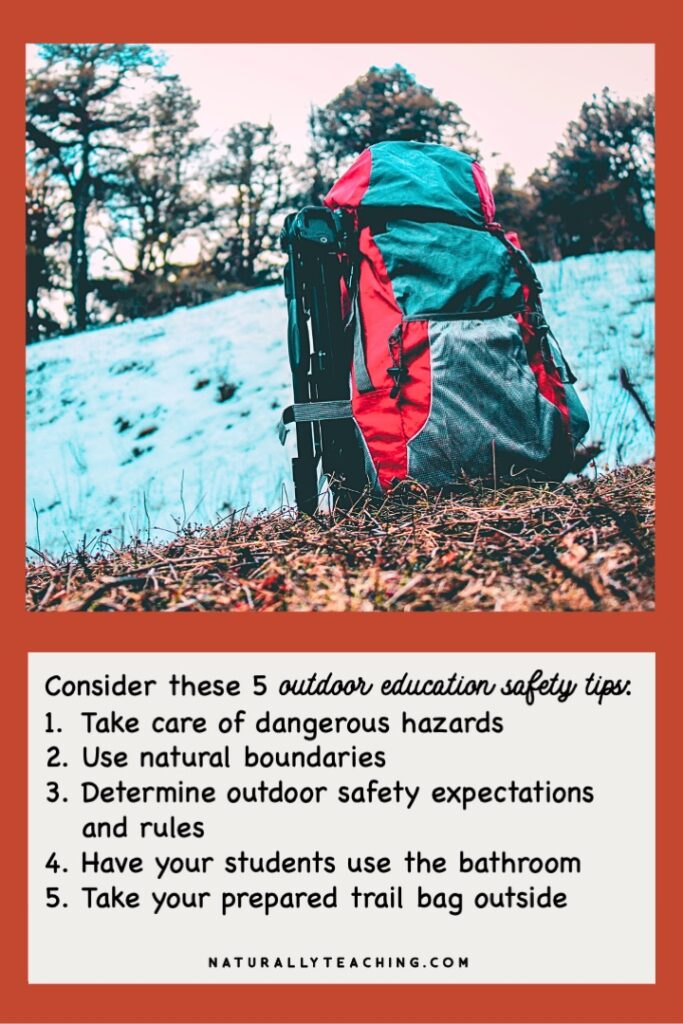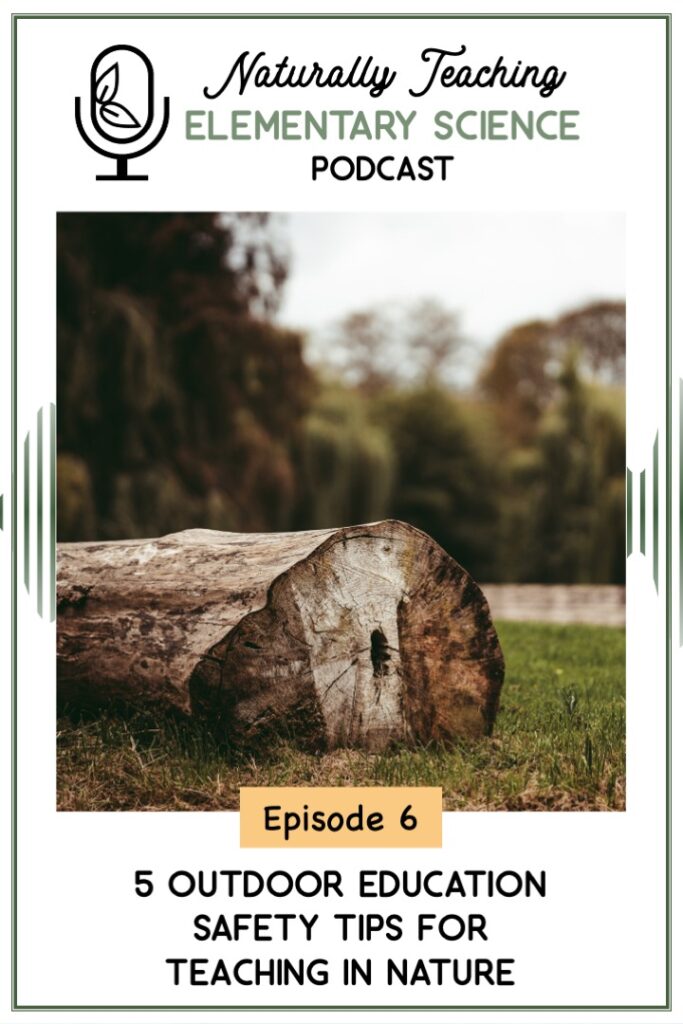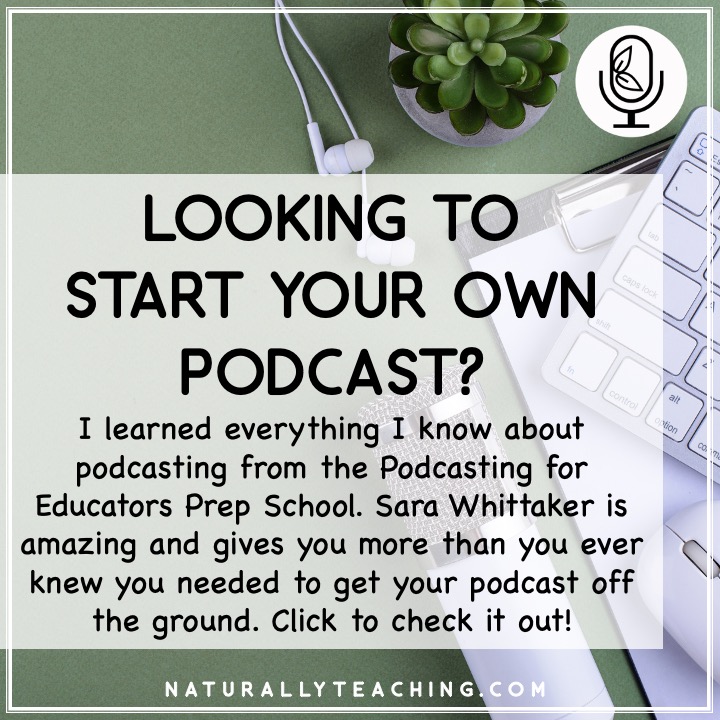Science
Frogs and Toads Together: Why do Amphibians Group Up?April 11, 2025

![5 Outdoor Education Safety Tips for Teaching Outside [ep. 6]](https://www.naturallyteaching.com/wp-content/uploads/2024/06/episode-6-header.png)
If you’ve considered teaching outside, but safety concerns have held you back, I’m here to help! Outdoor education safety can be managed just like any other aspect of teaching and can come as second nature when practiced regularly.
In this episode, I share 5 tips to help you feel more at ease with teaching outside, help your students be successful learning outside, and keep students, adults, and nature safe.
Safety tips mentioned in the episode:

[00:00:00]
Teaching science in elementary school is crucial for nurturing young minds, but as educators, finding the time and resources to create engaging lessons can be a challenge. That's where this podcast comes in. Welcome to Naturally Teaching Elementary Science, the show dedicated to supporting elementary teachers in their quest to bring authentic and place-based science experiences to their classroom.
I'm Victoria Zablocki, a certified elementary teacher turned outdoor educator. With over a decade of experience coaching teachers on effective science teaching methods, I'm passionate about making science accessible, understandable, and fun for educators and students alike. Join me as we explore strategies for teaching science in elementary school with practical teaching tips, insightful interviews, and more.
[00:01:04]
Welcome back to the Naturally Teaching Elementary Science Podcast. I'm Victoria Zablocki, your host, and today we're going to be talking about outdoor education safety. If I'm completely honest, the safety of learning outside is probably the most intimidating part of taking students outside to learn.
However, if you put the time in now, before the school year has even started, and you consider outdoor education safety measures, you'll be good to go. And I'm here to help you. So, in this episode, I'm going to cover five outdoor education safety tips to help you plan this summer so that you're ready for the school year.
By thinking through these five safety measures, you'll be setting your students and yourself up for an easier transition to the outdoors. As we continue this podcast, we're going to be adding to your outdoor education toolbox. But if you're looking for more information right now, because you're just ready to go, check out my blog post, “Outdoor Education: How to Use Nature to Improve Your Science Studies, on naturallyteaching.com and I'll walk you through setting up your outdoor learning environment, all the way to how to teach outside, to outdoor learning equipment that it's nice to have. It's chocked full of information. So if you're just ready to roll, go ahead and check that out.
[00:02:24]
So, my first outdoor education safety tip for you to consider today is the space. How can we make the space safe while also giving the students what they need? You want to be careful not to take away the aspects of nature that give your students the biggest benefits to their body and their minds. Their gross motor skills benefit from natural obstacles, such as things like sticks, logs, dips in the ground, and uneven ground.
But if you remove those things from your exploration spaces, then you're depriving your students of the opportunity to better their coordination. So those aren't what I'm talking about today. We're not talking about going in and pulling sticks and logs out or evening the ground.
Another thing that might come to mind would be loose parts of nature, things like rocks, leaves, twigs, those sorts of things. But those actually provide rich manipulatives for learning. So, by removing those pieces, you'd be depriving your students tools for understanding. So, what parts of this space am I talking about and what should we affect?
What I'm suggesting is that you take a walk around the spaces that you think you'll be using regularly. What you want to look for are dangers such as branches that are no longer attached to the tree, but are stuck by hanging on other branches. Those could come down and hurt a student, so you want to make sure that those get removed, or you avoid that space.
Another thing to look for would be ground nests of bees or wasps. And you want to do this on a day where it's relatively warm or the sun is shining. If it's cold and the sun isn't out, you may or may not see the nest, but on a day where it's warm and the sun is shining, you're more likely to see activity near holes in the ground. And that's what you want to look for are wasps or bees moving in and out of a particular hole. You definitely want to avoid those spaces.
Another thing to watch out for are dangerous plants such as poison ivy or raspberry briars. If you find locations with any of these dangers, you need to either note the area and avoid it, or ask your administrator if you can have the grounds staff remove the hazards. A lot of maintenance staffs are too busy and don't have the time to help with these tasks, so it may be best just to mark the area for avoidance. Or, if you have a group of volunteers or your PTO, and they're willing to come out and help you make a space safe, that might be another option, but a lot of times maintenance staff are too busy. You may just need to avoid this space.
[00:04:52]
A second outdoor education safety tip for you today is to get into the habit of using natural boundaries to keep track of your students. Natural boundaries are landmarks that are easy for children to identify and see. So, things like fences, playground lines, large logs, sidewalks, that sort of thing.
These help define the exploration space so that you can keep eyes on your students while they learn. It's important to note that you want to select an area that has good natural boundaries but also does not have blind spots. You want to watch out for heavily wooded areas because trees can prevent you from having a line of vision to all of your students.
If you do choose to use a heavily wooded area, make sure that you have support to keep an eye on all of your kiddos. And we'll talk more about that in another tip. When you begin each of your outdoor lessons though, make sure to share the natural boundaries with your class. The first time you use a new space, you could walk with your students around the space, showing them which natural boundaries you're talking about.
And then, repeated visits will provide familiarity, and the students will need less coaching to stay within those boundaries.
[00:05:57]
So, moving away from the space, outdoor education safety tip number 3 is to have specific safety expectations. These expectations should be decided by you before you start taking your students outside, and then they should be taught when you're setting up your outdoor learning environment the first few weeks of school.
If you're not sure how to set up your outdoor learning environment, consider going back to episode 2, “Outdoor Learning Environment: 3 Things to Plan for Back to School”. There I'll talk to you all about how to set up your outdoor learning environment, expectations, rules, all that sort of stuff.
If you're not sure where to start with your outdoor safety expectations, consider checking in with your administrator. Some schools don't allow for things like tree climbing or jumping off of logs. So, check with the administration to see what rules they may have in this regard. And then make sure you adopt them in your expectations.
And then, when considering your outdoor safety expectations, remember that early childhood learners in particular can't remember too many things at once. You'll want to keep your rules and expectations succinct and to a minimum. So, you'll want to determine umbrella type rules such as “keep each other safe.” That way, your early childhood students can remember all of the rules, but they also cover a variety of things that could come up and could create safety issues.
At the beginning of the school year, bring up your rules and have your students provide examples of how to follow those rules. So, to bring that to life, if you come to your meeting space, as I talk about in episode two, you'll have everybody sit down. You'll say, “I'm going to introduce the rules for us when we're outside learning together. One of those rules is to keep nature safe. How do you think you could do that? How do you think you could keep nature safe while we're outside learning?”
So maybe a student would raise their hand and they would say, “I'm not going to pick plants.” And you say, “Great, that'll keep the plants safe.” Maybe another student says, “I won't squish bugs.” And then you address the fact that, yup, that would keep the bugs safe. This will make them feel like they're a part of making the rules and building that classroom community, but it will also allow you to hold your students accountable.
So, if a student is picking flowers, you can say, “Oh, do you remember when we sat down together and we all agreed to keep nature safe? We decided that that meant we would leave the plants where they were and we wouldn't pick them.”
You should make sure to remind your students of the rules before you start each of your outdoor lessons. This is another good reason to keep them succinct and minimal, because if you have to repeat them at the beginning of each of your lessons, you don't want to take up a ton of your time repeating your rules every single lesson. But it is important to remind them as they go outside that you do have these expectations and that they need to keep those in mind in order to keep themselves, nature, and everyone safe.
[00:08:48]
Outdoor education safety tip number four is another classroom management technique, which is to make sure that your students go to the bathroom before you go outside each time.
Unfortunately, most teachers don't have the help of para-pros and you'll end up taking your students outside by yourself. And if that sounds like you, having your students go to the bathroom before you get everyone dressed and to the exploration space will save you a lot of hassle. If you're the only one outside, and you have one student that needs to go back inside, you still need to have eyes on all your other students, in addition to the student that needs to go to the bathroom.
So you'd likely end up taking all of your students back inside, creating another transition, which creates more lost time. So, if everyone goes to the bathroom before you go outside, then you'll have fewer transitions, more time outside. And you won't have to worry about having a child get lost on their way back to the school or end up wasting time in the hallway.
It's important for you to count and keep track of all your students while you're outside. And that is one of the best preventative measures to avoid safety issues. So, if you make sure that you have your students go to the bathroom before you go outside, you can make sure you have everyone all together and you can keep track and count everyone in order to prevent those safety problems.
A hack for this outdoor education safety tip is to utilize your classroom adults during your outside time if you have them. So, if you're going to have a parent volunteer or a volunteer high school student on certain days of the week, you can plan your outdoor lessons to happen when they'll be with your class. And that'll give you more eyes on your students, which can help you avoid safety situations.
[00:10:33]
And then my last outdoor education safety tip is to keep a trail bag ready to take outside with you for each outdoor lesson. Your trail bag should include a first aid kit that has band aids, an instant ice pack, hand sanitizer, and Kleenexes. These are the items that you'll most likely need when a small first aid situation happens. If anything larger than that happens, you'd likely end up having to go inside and taking your student to the office.
If your school has them, you should also bring a walkie talkie outside with you whenever you go out for an outdoor lesson. If you don't have walkie talkies, though, your cell phone will work just as well. And that's just in case you need to get a hold of the office staff or a support person in the event that you need some assistance. Some other things that you could have in your trail bag would be your attention getter if you're using a whistle, a drum, a kazoo, something like that. And also a set of orange cones could help if you don't have a lot of natural boundaries in your location. That helps make boundaries more identifiable.
And then unrelated to safety, you could also have a classroom set of pencils, some loose paper, appropriate field guides, and other things that you find the need for regularly; and those are things you'll learn as you spend more time outside.
[00:11:46]
In a nutshell, my five outdoor education safety tips for you today are:
And don't forget, if you want more information now about outdoor education, check out my blog post, “Outdoor Education: How to Use Nature to Improve Your Science Studies”, on naturallyteaching.com.
So thanks for taking time to listen today. I know you're busy and the fact that you've chosen to spend your time listening to this podcast is wonderful. If you enjoyed the episode, consider leaving a review on the podcast player of your choice. It helps me get better and it also helps me reach more educators like you. If you have any questions, wonderings, or outdoor education safety tips that you want to share, get ahold of me on Instagram @naturally.teaching, or you can email me at victoria.@naturallyteaching.com. Thanks again for joining me today. And until next time, keep exploring, keep learning, and keep naturally teaching.
[00:12:56]
Thank you so much for tuning into today's episode of the Naturally Teaching Elementary Science Podcast. I hope you found it informative, inspiring, and full of actionable insights to enhance your science teaching journey. Connect with me on social media for more updates, science tidbits, and additional resources.
You can find me on Instagram and Facebook @naturally.teaching. Let's continue the conversation and share our passion for elementary science education together. Don't forget to visit my website at naturallyteaching.com for all the show notes from today's episode.
If you enjoyed today's episode, please consider leaving a review on your favorite podcast platform. Your feedback helps me improve and reach more educators just like you. Thank you again for listening, and until next time, keep exploring, keep learning, and keep naturally teaching.


0